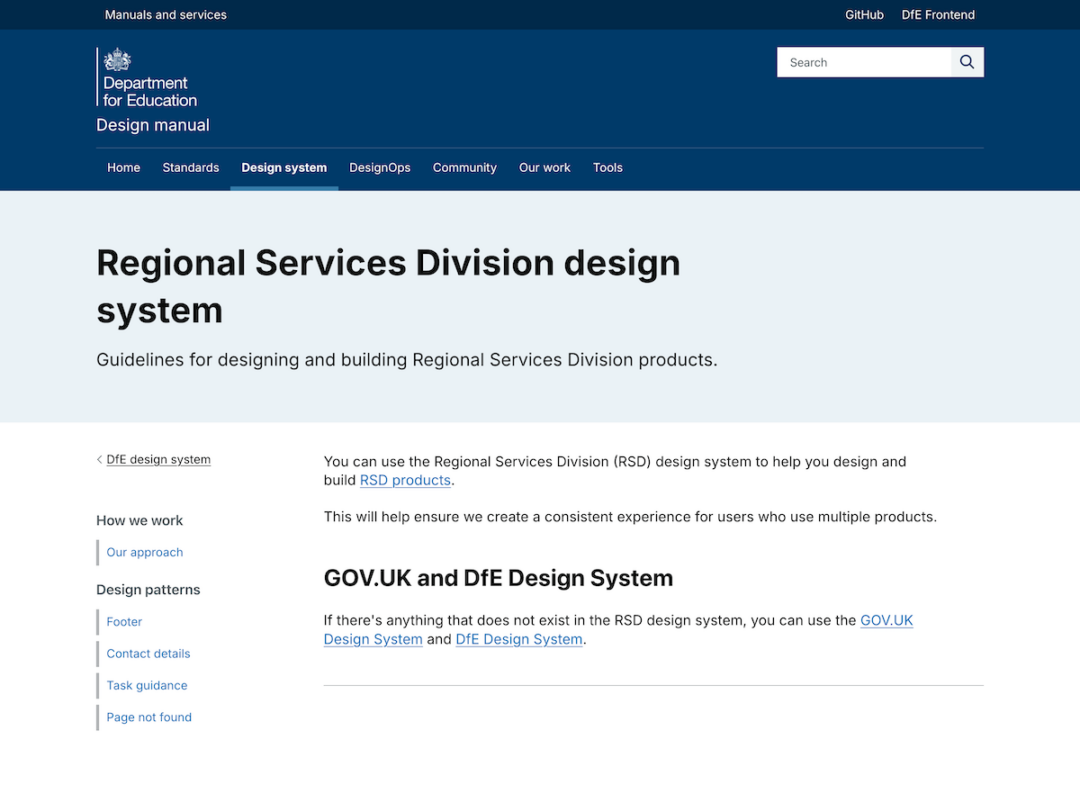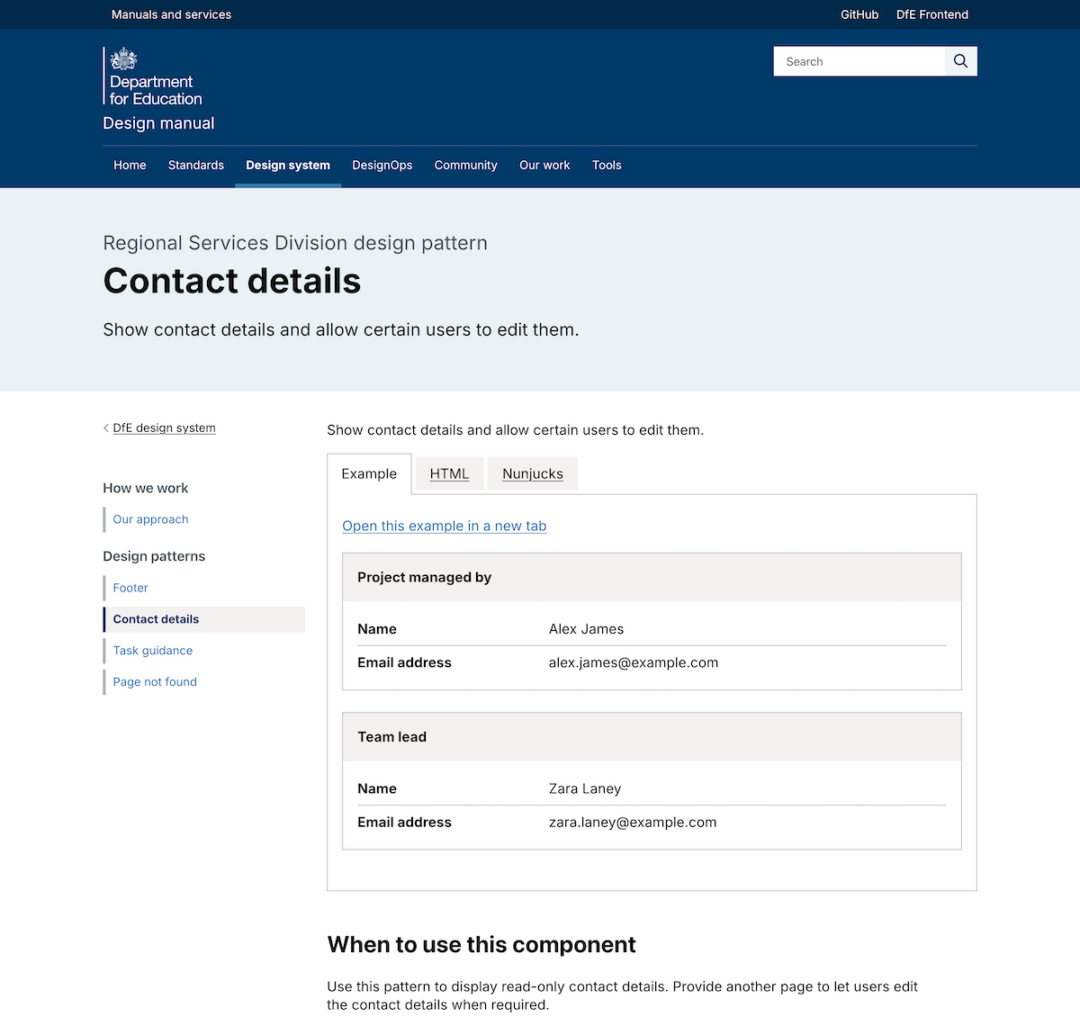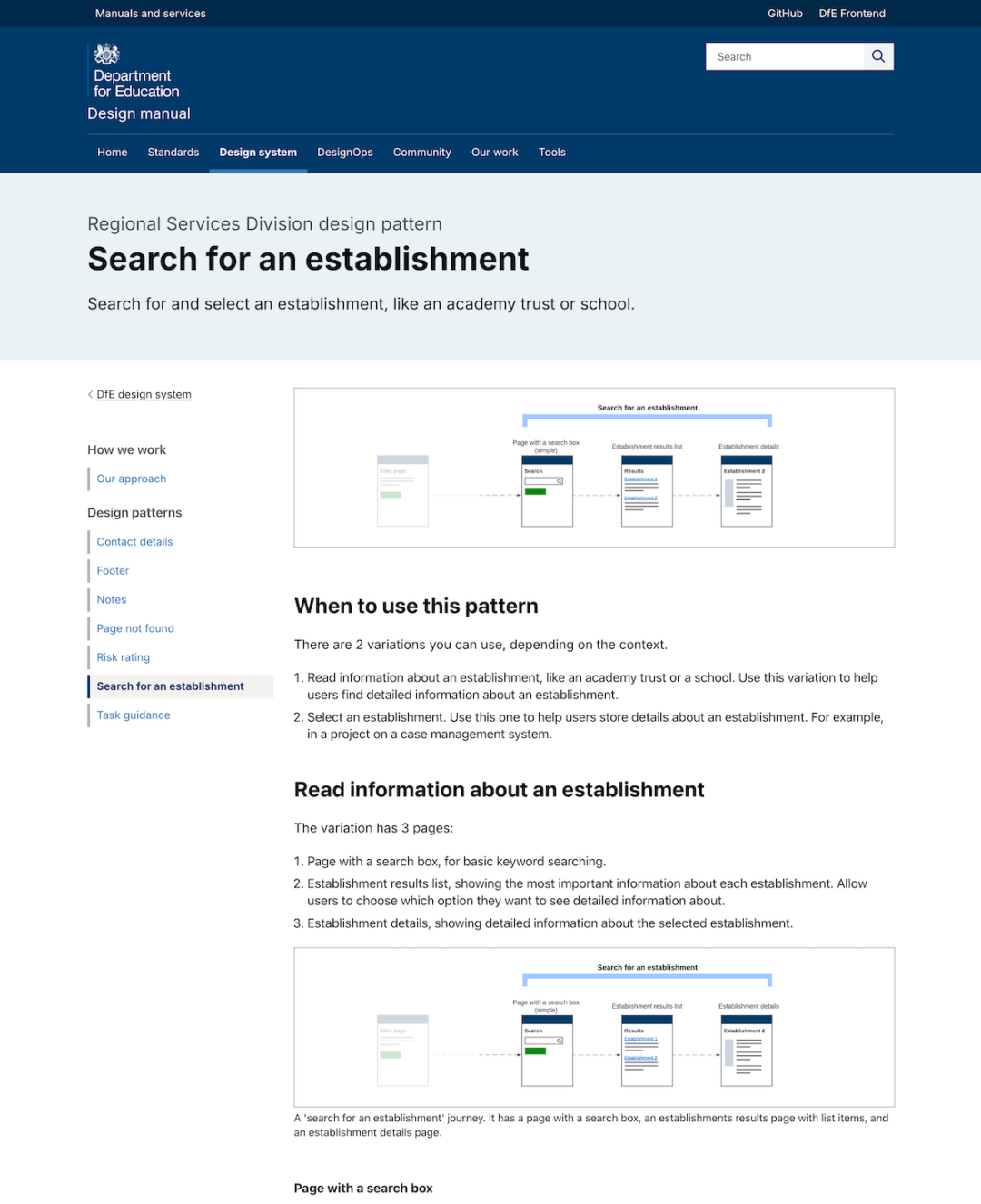Launch of the DfE Regional Services Division design system

Design patterns will only improve consistency if they are linked to user needs
For the last 3 years, we’ve partnered with the Regional Services Division (RSD) at the Department for Education (DfE) to improve the service for schools converting to academies. Several dxw team members have been part of the RSD UCD (user-centred design) cross-cutting group, a small leadership team of dxw designers and civil servants with a mission to enhance the user experience across RSD’s services.
Earlier this year, the team identified design challenges resulting from inconsistent approaches across different projects. With varying solutions being applied to similar user needs, RSD was struggling to create a cohesive user experience and work more efficiently. To address this, we developed a strategic framework focused on creating unified design patterns, enhancing collaboration, and establishing more structured design leadership.
Challenges in design consistency
Our analysis revealed 4 main challenges:
1. Inconsistent solutions for similar needs
Despite numerous pattern libraries and design systems being available, consistency was still a challenge. This often happens where solutions are disconnected from user needs and teams are unaware of the needs being addressed by other services. When teams know that similar solutions already exist, they are much more likely to adopt them and design is more consistent.
2. Lack of accessible documentation
Documentation lacked standardisation. Some information was stored in internal Azure DevOps wiki pages, where adding images and source code is challenging, other content was saved on Lucidspark boards, which are better for visuals but less ideal for text-based content. Some team members were unaware of this scattered documentation, making it difficult to reference or adhere to established guidelines.
3. Autonomy without unified guidance
Teams had considerable freedom in their designs and lacked a guiding framework to operate within, resulting in deviations from established patterns and increased design inconsistency.
4. Insufficient cross-team communication
Limited collaboration across projects meant awareness of existing solutions was limited, leading to further duplicated effort and inconsistency.
Proposed strategies for improving consistency
Our recommendations aimed to address these challenges by establishing shared design patterns, enhancing documentation, and fostering cross-project collaboration.
1. Developing accessible documentation and central resources
We proposed using a central tool as the primary repository for design documentation, including patterns, user needs, and relevant resources. Initially the idea was to move everything to the DevOps wiki, but as this was an internal tool it would only be accessible to DfE staff.
During the development process, the DesignOps team at DfE confirmed they could support us by providing a section on the DfE Design Manual for RSD design patterns. This would make documentation more open and accessible — a significant upgrade from our initial proposal.
2. Creating reusable design patterns based on user needs
As mentioned above, design patterns will only improve consistency if they are linked to user needs. We needed to adopt a “user needs first, design patterns second” mindset and proposed the following:
- User needs database: We recommended creating a comprehensive user needs library to serve as a foundation for consistent design decisions. This searchable library would include records from projects across RSD, helping designers quickly identify if similar user needs have been addressed in other services.
- Standardised patterns for common interactions: For recurring interactions, such as project filtering or assigning team members, we proposed documenting existing solutions as predefined design patterns and linking them to user needs in the database. This ensures patterns are well researched and validated. Designers would follow these patterns unless they found new evidence suggesting an alternative approach.
- Iterative pattern review: Regular pattern reviews, informed by user research and team feedback, would enable the design team to refine and adapt patterns over time to maintain their relevance without compromising consistency.
3. Improving cross-team collaboration and communication
There was also room to improve cross-team communication:
- User needs review rituals: We proposed regular review sessions across teams to promote a shared understanding of evolving user needs, and allow for early identification of common patterns. In these sessions, team members would present new user needs and discuss potential overlaps with existing solutions.
- Collaborative design workshops: Inviting team members from each project to design workshops to ensure patterns developed for one project are visible and available for adoption by other teams.
While our aim is to encourage consistent design across RSD services, we were mindful not to enforce changes too quickly or rigidly. So we suggested that projects using older patterns are given a timeline to transition to the new standards, allowing for a gradual, manageable shift toward alignment.
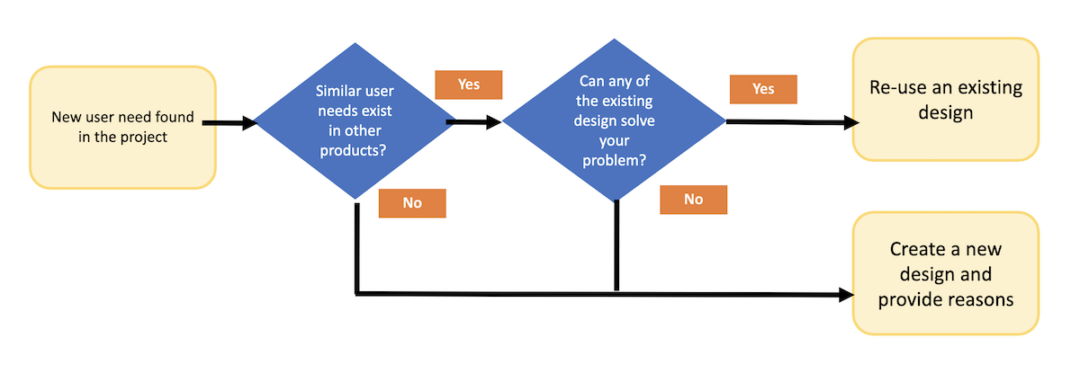
We established this vision earlier in the year with the expectation that RSD would set up new teams in the future. Approximately 9 months later, 5 new project teams have been introduced into the programme. We’re confident that these teams will benefit from the groundwork we’ve laid.
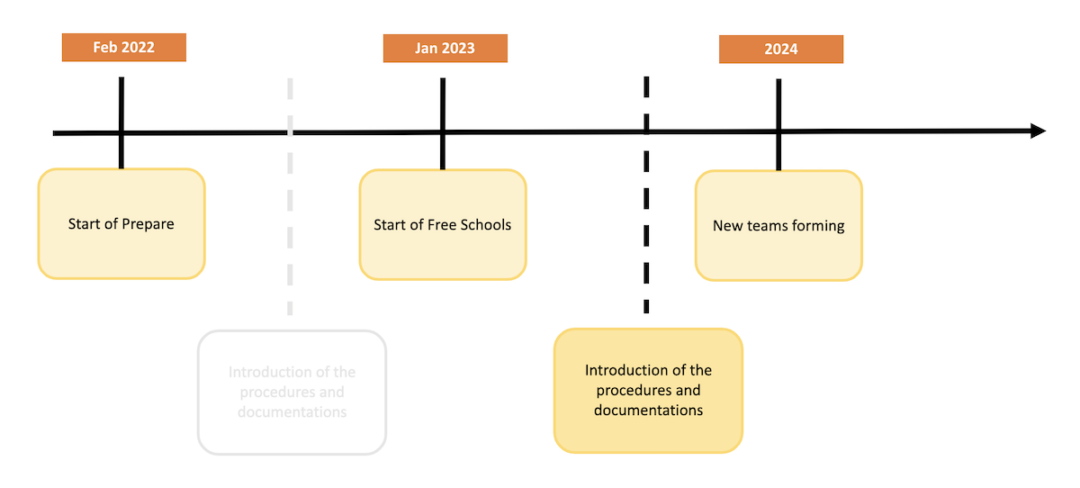
Expected benefits and long-term impact
Our strategies for improving consistency should deliver a number of benefits:
- Improved user experience: Standardising interactions and visual elements will create a cohesive, predictable interface across RSD’s suite of products, enhancing usability and reducing cognitive load for staff.
- Increased efficiency: With a shared library of design patterns and documentation, designers and developers will be able to quickly reference and implement proven solutions, saving time and reducing duplication. This also allows more time to focus on newly identified user needs.
- Enhanced collaboration and knowledge sharing: Regular cross-team interactions will break down silos, allowing team members to benefit from each other’s insights and fostering a supportive design community within RSD.
- Alignment with DfE standards: Integrating RSD’s documentation with DfE’s broader design framework will ensure RSD’s practices align with the organisation’s overall standards, supporting a unified wider brand identity. We hope that other divisions in DfE will also use these design patterns as references and collaborate with us in future.
Implementation of the design patterns library
Our proposals were well received by RSD’s senior leadership team and we have collaborated closely on their implementation so far:
- Prioritising patterns: We reviewed patterns across teams to prioritise those most widely shared or with the fewest variations, making them easier to document.
- Identifying common elements: By comparing solutions across services, we identified common or similar components addressing similar user needs and recommended a generic solution with flexible alternatives to meet unique needs.
- Writing patterns consistently: We structured our patterns based on GOV.UK Design System patterns and prototyped reusable code snippets.
- Review and feedback: We presented documented patterns to the RSD UCD community for feedback and refined them as needed.
The RSD design patterns library was finally deployed to the DfE Design Manual last week. We adopted a gradual approach by launching initially with 4 patterns instead of a large release. Most of the initial patterns were relatively lightweight, with one being more complex. This approach allowed us to gather feedback from the UCD community and gauge the effort required to document additional patterns in future.
At the time of writing, we have completed another 3 which are ready for publication. These new patterns are more intricate and reflect lessons learned from the initial launch.
A win for dxw and DfE
We’re really pleased about the positive feedback from DfE’s senior leadership and colleagues. It’s the result of working in close collaboration to deliver great design that works for users and the organisation. We’re looking forward to more success together in the future.
